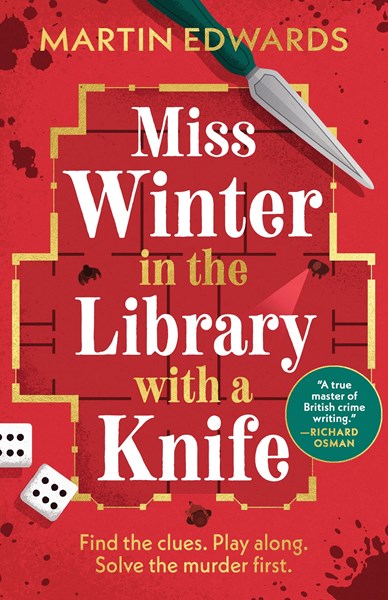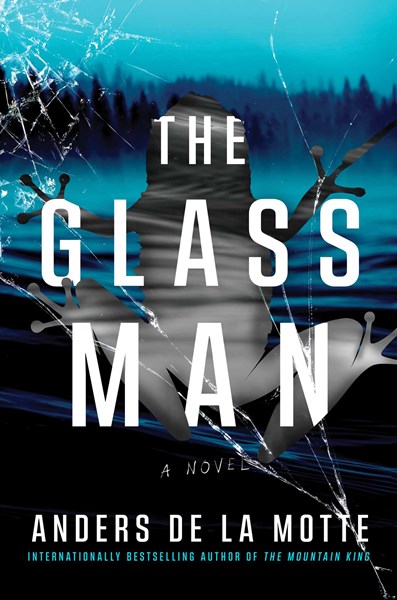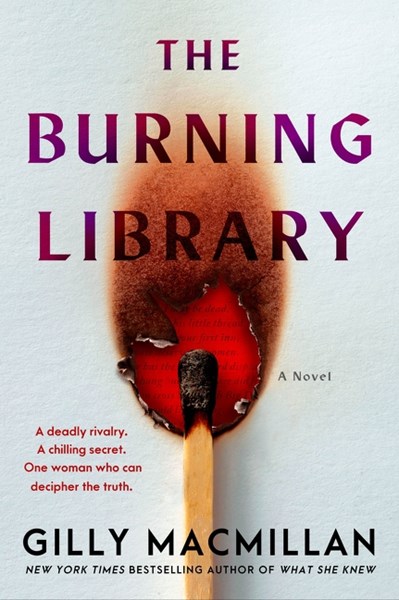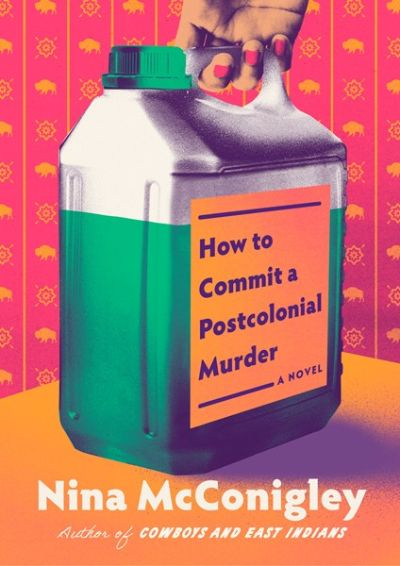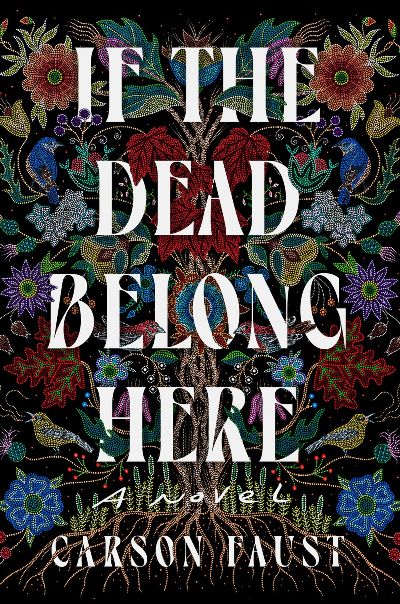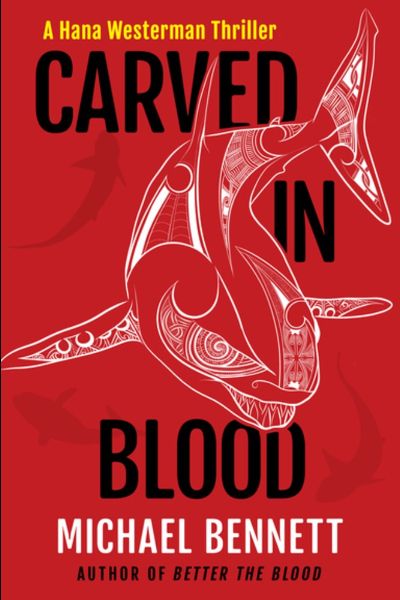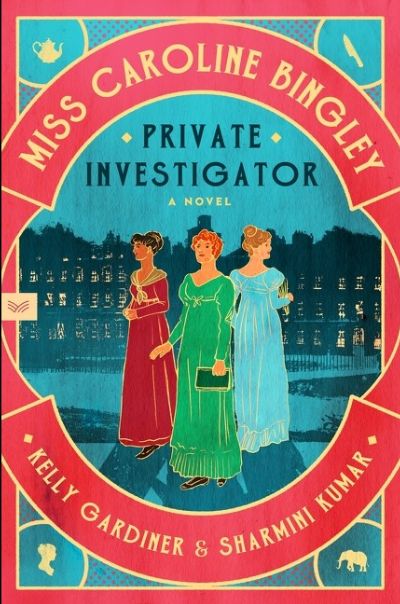In a clever standalone homage to Agatha Christie and other Golden Age authors, Edwards (Rachel Savernake series) invites “external observers” (i.e., readers) and “analysts” (reviewers) to participate in an interactive puzzle mystery-within-a-mystery set in a remote, snowbound Yorkshire village. The mysterious Midwinter Trust has brought six down-on-their-luck people with connections to crime fiction (including washed-out author Harry Crystal and laid-off book publicist Poppy de Lisle) to Midwinter village in the rugged Pennines to solve a fictional murder over the Christmas holidays under the close supervision of six Midwinter Trust employees. But the game soon goes awry when one of the guests, podcaster Baz Frederick, is found dead in a frozen creek; it is determined that he fell accidentally. But two more deaths are more than coincidental. Is a killer on the loose? As the players struggle to solve both the actual murders and the fictional one, readers can apply their own detective skills in deciphering the clues the author sprinkles throughout the podcast excerpts, text messages, journal entries, webpage excerpts, and third-person narrative. He even provides a Cluefinder (a nod to Golden Age detective fiction) but warns sternly that readers who cheat will be disqualified. If you love to play Clue and are a fan of atmospheric cozies, this is a fun, diverting read.
Willy Williams
Opening shortly after the traumatic events of The Mountain King, the second entry in de la Motte’s Asker series finds Leo Asker settling back into her job as head of the Malmö police’s obscure Resources Department (aka The Department of Lost Souls) when the estranged survivalist father she calls “Prepper Per” contacts her after 15 years of silence. A body has been found near his farm, and he will be arrested shortly as the primary suspect. Claiming a frame-up, Per threatens violence if Leo refuses to help him. Having survived her father’s attempt to kill her years ago, she knows Per means business. Meanwhile, childhood friend Martin Hill, recovering from injuries sustained from helping Leo on her last case, has moved to the remote and eerie lakeside estate of the Irving family to write the history of the medical technology company founded by paterfamilias Gunnar Irving. Long obsessed with the rumors (UFOs, red-eyed aliens) behind the Irvings’ success, Martin is thrilled at the chance to investigate further. But he soon discovers dark secrets that might be connected to Leo’s probe. Once again, the author has penned an atmospheric, fast-paced thriller that features a creepy serial killer and provides plenty of chills for the dog days of summer. Leo and Martin make a great sleuthing team, and Scandinavian noir readers will eagerly await their next adventure.
“You know what a witch hunt is? It’s when a big lie declaring someone anathema to the prevailing orthodoxy gets a head of steam…,” explains narrator Mick Mulligan. It’s July 1950, and the country is in the grips of anti-communist “Red Scare” fever. Blacklisted from his job as a Disney cartoonist, Mick is back in New York, divorced, broke, and starting as a private detective to pay child support. But his first case may prove impossible to solve. A year and half earlier, Irwin Johnson, a despised cab company owner, was shot to death in his garage office. Evidence pointed to Black cab driver and Communist Party member Harold Williams, who had led a wildcat strike against Johnson’s company a month before the murder. Tried and convicted, Harold sits in Sing Sing prison, awaiting execution on August 4. Now, labor leader Duke Rogowski wants Mick to find new evidence to exonerate Harold. The problem is that Mick only has 15 days. In the best hardboiled noir tradition, our gumshoe doggedly pursues clues and reluctant witnesses like sexy femme fatale widow Eva Johnson (think Lana Turner) while fending off Mob goons named Moose. If Lehane’s (Murder at the College Library) red-herring plot twists don’t always make sense, his gritty portrait of 1950s New York rings true. While there is only one actual murder, the novel vividly depicts the McCarthyism that destroyed so many lives. A treat for noir and historical mystery fans.
Yale University’s Beinecke Library possesses the 15th-century Voynich manuscript, a codex so mysterious and untranslatable that it would stump even The Da Vinci Code’s Robert Langdon. But Macmillan (The Manor House) daringly incorporates this unique book as a possible clue to an even more cryptic ancient text in a twisty feminist thriller that features deadly secret societies, a sleuthing scholar, a Scotland Yard detective, and an action-packed quest that begins in Scotland and ends in Italy. On a remote Scottish island, Eleanor Bruton, a member of the Order of St. Katherine, or the Kats, is studying an antique piece of embroidery for clues to a valuable title, The Book of Wonders, when she is brutally murdered. Her killers work for a rival women’s group, the Larks. While the Kats seek power over men through their traditional roles as wives and mothers, the equally ruthless Larks represent feminist modern women. Caught unwittingly between the two groups is Anya Brown, a brilliant, newly minted PhD., who has been hired by the elite Institute of Medieval Manuscripts in St. Andrews to study a private collection of rare materials. In London, DC Clio Spicer suspects that the “accidental” death of her mentor might be connected to Bruton’s killing. Despite the anticlimactic conclusion, Macmillan takes readers on an exciting adventure that will please Katherine Neville and Dan Brown fans.
“The Ayyars dipped into our lives like a tea bag into the whiteness of a porcelain cup. They muddied the water and made our house feel small….” In the summer of 1986, tween narrator Georgie Ayyar Creel; her sister, Agatha Krishna; and their amma (mother) welcome newly arrived relatives from India to their cramped home in rural Wyoming. Moving into Agatha Krishna’s bedroom are Vinny Uncle, Amma’s beloved but useless younger brother, whom she has not seen in 14 years since marrying geologist Richard Creel; Auntie Devi, Vinny’s bossy wife; and their son, Narayan. Tensions quickly arise, and so does the sexual abuse when their uncle targets Agatha and then Georgie: “Vinny Uncle made us shadow people.” Forced into silence by their abuser, the sisters decide he must die. The accidental death of a cat provides the murder weapon and sets the siblings’ deadly plot into motion. This highly original debut novel by the author of the award-winning short story collection Cowboys and East Indians is a darkly funny coming-of-age tale with a touch of murder and a haunting twist. Celebrating girlhood and sisterhood in the 1980s, it’s also a touching portrait of Indian-American teens, caught between cultures, in the American West.
In this Korean bestseller, police detective Suyeon is called to the scene of the fourth suicide of an elderly patient at a crumbling hospital in a deserted part of Incheon. Her boss believes the deaths, spurred perhaps by pervasive depression and loneliness, are coincidental and sees no point in investigating further, especially since their families had abandoned the dead. But Suyeon thinks something is off. All four victims, who suffered from dementia, jumped from the hospital’s sixth floor, but very little blood was found at the spots where they landed. Returning to the hospital later that evening, Suyeon encounters a mysterious Korean-French woman named Violette, who tells her, “A vampire did it.” A skeptical Suyeon angrily dismisses Violette until the autopsy of a fifth suicide reveals two puncture holes in the victim’s neck and the body drained of blood. Claiming to be a vampire hunter, Violette explains to Suyeon that someone at the hospital is helping a vampire target his next victims. As Suyeon seeks to identify that particular nurse, the narrative shifts back to 1983 France, when a teenage Violette, adopted by loving French parents but feeling isolated and lonely because of her Koreanness, begins a strange, intense, almost Sapphic friendship with the enigmatic, barefooted Lily. Skillfully translated (but a glossary of Korean terms would have been helpful), Cheon’s novel is more than a queer paranormal mystery (the inconsistent vampire elements are its weakest parts); instead, it’s an eerie and bleak portrait of societal loneliness, isolation, and marginalization.
Between 1830 and 1850, the U.S. government’s forced displacement known as the Trail of Tears removed thousands of Native Americans from their ancestral lands in the Southeastern United States. But according to Native folklore, some Indigenous people evaded the Removal, sheltered by supernatural Little People. Faust’s atmospheric debut focuses on a family descended from those survivors and the generational trauma they have endured. When six-year-old Laurel Taylor vanishes from her Wisconsin home early one morning in 1996, her devastated mother, Ayita, believes her abusive ex-husband Barron kidnapped their daughter, even though Barron had abandoned the family before Ayita realized she was pregnant. But as weeks pass by and Laurel remains missing, Nadine, her older sister, begins experiencing nightmares and hearing whispers, especially in the tree house where Laurel always played. Have the Little People taken Lauren or are other family ghosts responsible? To find answers, Nadine travels with her Aunt Rosebud to South Carolina, where her fractured family has deep roots. Faust, an enrolled member of the Edisto Natchez-Kusso Tribe of South Carolina, draws on his family history and Indigenous mythology to weave a haunting tale of loss and redemption that may remind some readers of Keith Donohue’s The Stolen Child with a touch of Poltergeist.
Agatha Christie’s 1939 And There Were None set the template for the island mystery with its protagonists trapped on a remote isle and stalked by an unknown killer. The arrival of cell phone technology has forced writers to up their thriller game. As with the guests in Sean Doolittle’s Device Free Weekend, the five girlfriends who arrive at Baltic Vinyasa on Isle Blind off the Swedish coast for a four-day yoga-themed bachelorette party must give up their cell phones and other digital devices to the proprietor, Irene. “I wish I wasn’t so addicted to my devices,” confesses Lena. Her sister Tessa, the bride-to-be’s best friend, has another, more secret, motive for joining the party. A true-crime podcaster whose latest episode crashed and burned in the wake of a scandal, she hopes to redeem her career by solving the mystery of the Nacka Four. A decade earlier, four young women, who had traveled to the archipelago for their annual reunion, disappeared, presumed by police to have drowned when their boat was found floating. Tessa suspects they may have been murdered on Isle Blind and is determined to find evidence. But from the moment she steps on the island, her sense of dread grows. While elements of this twisty mystery require a suspension of disbelief (the luxurious hotel is built on a rocky island too barren to support crops yet has plenty of water for hot showers), Sten (The Resting Place) excels at building the creepy horror and chilling tension. Readers who like their thrillers bloody and gory will enjoy this dark Nordic take.
June in New Zealand means a chilly winter. But it also marks the rising of the sacred stars known as the Matarike, launching the start of the Māori New Year. “When Matarike rises, it is a time for remembering the dead; a time for saying goodbye. And it is also a time for starting anew.” Like the sacred Matarike celebrations, Bennett’s emotionally charged third Hana Westerman mystery (after Better the Blood and Return to Blood) revolves around a series of transitions, in which beloved characters say goodbye to loved ones and embark on new directions in their lives. Returning from festivities in his ex-wife Hana’s hometown, Detective Inspector Jaye Hamilton stops at an Auckland convenience store to pick up champagne to celebrate his daughter’s engagement when he is shot and seriously wounded by a balaclava-wearing assailant. The getaway car is quickly found and a young Māori man, Toa Davis, is implicated in the crime. But Hana, who has asked to join the investigation as a temporary constable, soon suspects that this was no random assault but a targeted attack. Could it be connected to Jaye’s work as an undercover cop years ago? Māori author Bennett delves deeper into New Zealand’s aboriginal culture (with helpful footnotes translating Māori words) while exploring the deeply embedded racism that the country’s first peoples face. An open-ended conclusion will have fans eagerly awaiting the next installment.
December 16, 2025 will mark the 250th anniversary of Jane Austen’s birth, and what better way to celebrate than with this delightful reimagining of Elizabeth Bennet’s antagonist from Pride and Prejudice. Two years after the events of that novel, in which the snobby and haughty Miss Caroline Bingley lost the battle for Mr. Darcy’s affections, she is “marooned” at her brother Charles’s estate in wintry Derbyshire, bored with weeks of country dances, unchanging society, and dull conversations. Despite her complicated relationship with the Darcys, Caroline has grown fond of Mr. Darcy’s younger sister, Georgiana. When Georgiana’s Indian maid, Jayani, disappears from Pemberley and Georgiana heads up to London alone in pursuit, Caroline, accompanied by her loyal manservant, Gordon, tracks both fugitives and stumbles upon a brutal murder that implicates Jayani. Drawing on her keen intelligence, her bold self-confidence, and her large income, our Miss Bingley plunges into a gritty underworld of poverty, cruelty, and exploitation far from London’s glittering Ton. As she seeks to clear Jayani’s name, she also discovers the brutal colonialism practiced by the East India Company. Australian authors Gardiner (1917) and Kumar (who produces Melbourne’s Austencon) transform Austen’s mean girl into a more sympathetic protagonist while preserving her quick wit, sharp tongue, and independent spirit. Janeites will eagerly await Miss Bingley’s next adventure in sleuthing.

